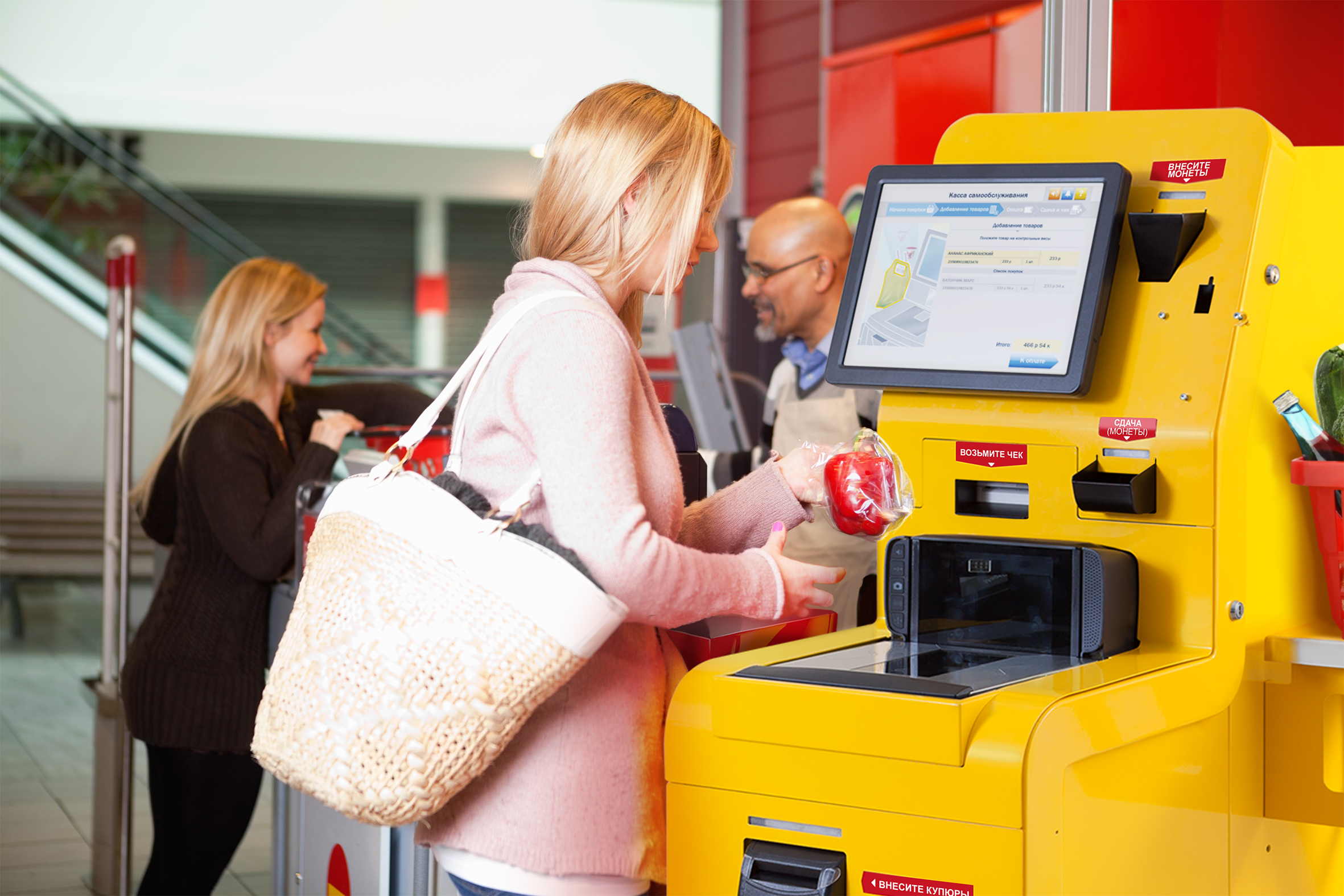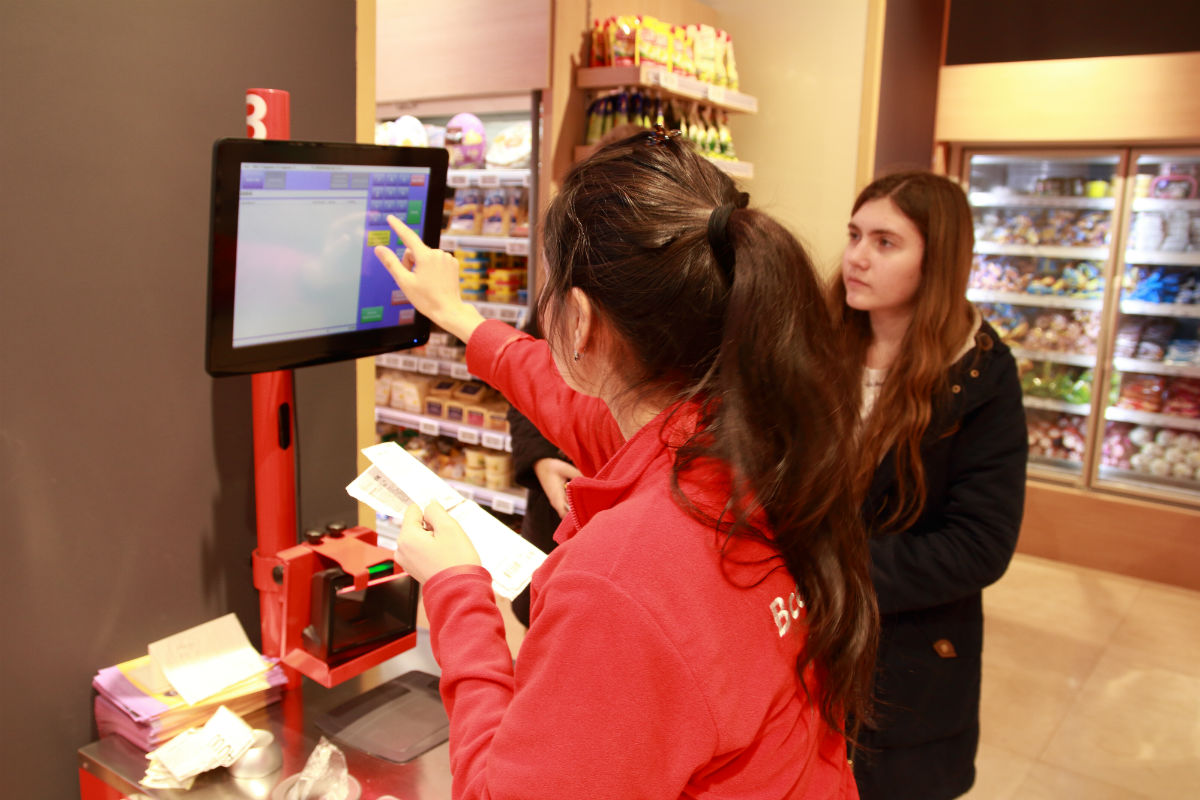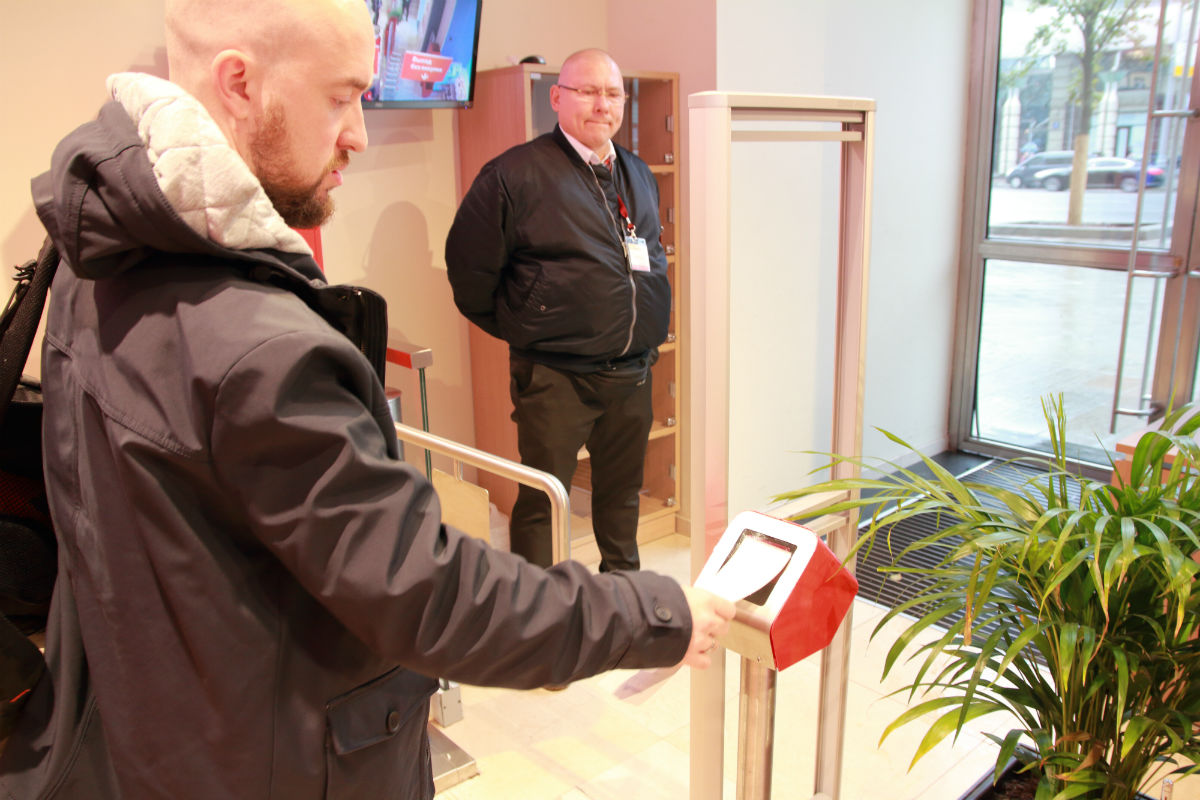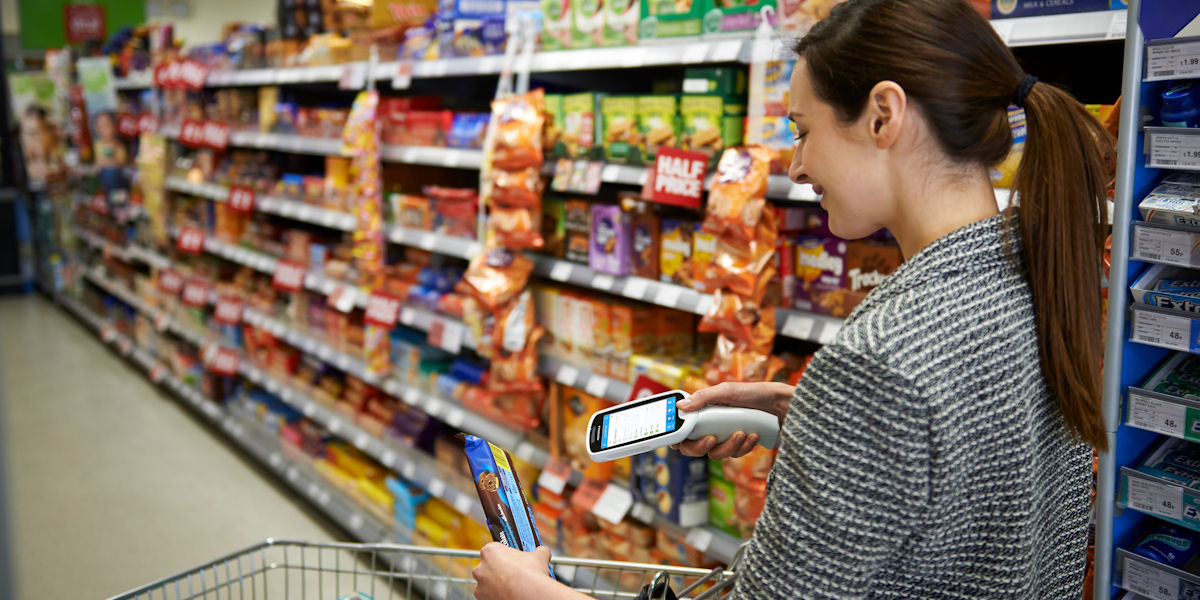How self-service systems solve shoplifting problems
Issues of fraud and theft in stores are not only related to customers, but also to staff. It is possible to discuss which of them is the culprit of the greatest losses. In practice, this indicator may vary depending on the assortment, location of the outlet and the security features of a particular store. The experience of our clients shows that the ratio between the volume of losses from customers and staff is about 50 to 50, with a small margin in favor of the latter. That is why retailers are forced to fight on both flanks, and take advantage of self-service technologies to reduce losses.

Perhaps you will immediately have a question: trusting customers to perform almost all the operations in the store on their own: scanning, weighing and paying, you will probably have to face an increase in losses? However, independent studies show that after the introduction of modern self-service systems, the store’s losses from theft, at least, do not increase, and, in most cases, decrease.
')
Today, four self-service technologies are popular:
Each of these technologies has its advantages and successfully solves the problems facing different store formats. And, as a bonus, it helps fight fraud from both the buyer and the cashier. Let us analyze how this works on the example of each technology separately.
Self-Checkout is a special device that allows the buyer to independently scan, weigh and pay for goods. Retailers install it to relieve the cash zone and reduce the need for staff. Self-Checkout takes up less space than a classic cash office, which allows you to place more cash lines on an equal area. This solution is most effective with a small amount of goods in the basket and an uneven flow of customers.
With this self-service organization, staff are not involved in working with cash and a scanner. And all operations performed by the buyer are controlled by an impartial machine. You cannot collude with such a cash register, and she will not cheat - the latter especially beats the store's reputation: the cashier has cheated (even if not on purpose), but is perceived as if the retailer had deceived.
Since, when working with the self-service cash register, the buyer is entrusted with a part of the cashier functions, the decision provides for a security system that controls the correctness of the transactions. One of the classic options: the system of control of goods by weight - the program knows the weight of all the goods, and, imperceptibly for the buyer, checks it with each scan. Such an intelligent and self-learning system.
Sometimes the weight control system of goods is supplied with sensors for pattern recognition and measurement of dimensions. But, this approach is rarely used, due to its unreliability. In addition, any complication of the system leads to a slowdown in customer service. And excessive “rigor” of the control system settings generates an excessive number of situations requiring the intervention of personnel.

In fact, there are not so many situations when a client tries to steal something. Often incidents occur because of the actions of the buyer, which is not always possible to put in the algorithm of the system. The system considers that something went wrong and sends a signal to the store personnel. Therefore, in the settings of the security system should be a balance between control and trust.
An important digression. A rough estimate shows that about 95% of buyers never steal, 3% doubt it, and may try to cheat at a suitable opportunity. Another 2% are those who will always try to deceive the store and professional thieves. It is almost pointless to fight the latter, in any case they will find a way to bypass the obstacle both in the form of a regular cash desk and in the form of any self-service system. Therefore, it is the work with a doubting audience that brings the greatest result. Most often, in order to stop it, the mere fact of the presence of attentive staff and video surveillance in the self-service area is sufficient.
Also an important feature of Self-Checkout, compared to a conventional cashier, is fully automatic cash handling. This almost eliminates the risk of accepting counterfeit banknotes and attempted fraud under the “I gave you more money - why so little change?”.
Results:
With the technology of self-service "Separate Scan" (Scan & Pay) store employee does not pay with the buyer. It only scans the goods and forms a pre-check, according to which the buyer is calculated on the payment terminal. As in the case of self-checkout, staff do not have access to money supply. The only option for possible fraud: the scanner may not scan part of the goods to "his" buyer. The same scenario is often used on ordinary cash registers.

However, the task of fraudsters is complicated compared to the usual cash register. After paying for purchases at the payment terminal, along with a cashier's check, the customer is printed out a coupon to exit through the automatic gate. At this point, according to a special algorithm, there is an additional imperceptible control by the security personnel. Based on data from the scanning and payment system, the guard receives information on the composition of the paid basket and carries out a remote visual inspection of the goods in the customer’s cart. Thus, in case of suspicion, the guard can check whether the actual contents of the package correspond to the paid check. In an ordinary store, there is no such additional mechanism for controlling goods of outgoing buyers, and a wide cash line does not allow to put a guard near each exit.
Unlike self-service cash desks, separate scanning does not have a limit on the number of purchases in the basket, and works equally well with single goods as well as with full trolleys in hypermarkets. Scanners quickly scan and pack goods. It is not necessary to wait until the previous customer makes the payment, since the calculations are carried out at the payment terminals, which are substantially more than scanners. This approach allows you to work effectively with a large flow of customers and avoid the formation of queues.

Results:
A hybrid cashier is a cash office, designed for simultaneous operation of the seller and the buyer. On the one hand, the seller weighs, packs the goods or prepares the ordered dishes by entering the necessary data in the cash program interface. On the other hand, the buyer interacts with the built-in payment module: he deposits cash and receives change. Most often, this technology is used in small stores with an “over the counter” service format, cafes and other organizations where staff need to be involved in the preparation of a product and shopping list, but the task is to eliminate its contact with cash, including for hygienic reasons. What are the advantages of this technology?

First, the seller again has no access to the money supply.
Secondly, the problem of hygiene is solved. You yourself know very well that money, to put it mildly, is not clean. Therefore, the seller can not use the same gloves in which, for example, he puts a bun in your package, accept payment, and then reach for another product.
Thirdly, the staff is cheaper for the retailer: the salary of the seller is always higher if he deals with the money supply.
As for working with the buyer, the hybrid cashier not only accepts payment, but also:
At the same time, the seller has no access to the cash processing modules. And the necessary replenishment and collection can be carried out, including through special cassettes, by analogy with an ATM. It also complicates access to cash by unauthorized persons - in contrast to the cash drawer that opens during each payment.
Results:
Self-scanning is a technology that has been gaining popularity lately, both in our country and abroad. It is particularly promising in terms of working with customer loyalty and ensuring fast service without unnecessary expectations at the checkout. Introducing it, the retailer seems to be telling the customers of the store: “We trust you”.
The technology of self-scanning is organized as follows: members of the retailer's loyalty program, entering the sales area, receive a personal scanner (specialized TSD) or launch a proprietary application on their own smartphone. With their help, they scan selected items before putting them in the basket, thus forming a shopping list - a future check. When a person completes the formation of the basket, he presses the "Pay" button in the smartphone application or on a personal scanner (TCD). And then it pays for purchases either at the classical checkout, or at the self-service checkout, or directly in the application.

In order for the retailer to be sure that all the goods in the basket are scanned by the buyer, the system provides various algorithms that analyze the actions of a person in the sales area. There are dozens of such controlled parameters - the retailer himself sets them up. If the system detects suspicious activity, the buyer is subject to the check: partial or full scan of the goods from the basket. Manual assignment of security checks is also possible.
Another important point in using self-scanning technology is that not all customers can take advantage of this privilege. It is available only to members of the loyalty system: which means that the buyer is not impersonal. Each person who registers in it has a personal level of trust, which, in combination with customized monitoring algorithms, helps the system to ensure the security of the outlet.
Results:
All of these technologies have their own characteristics. It is important to remember that security advantages are achieved not only by choosing a particular system, but also due to the proper configuration, implementation and organization of staff work. For each technology requires its own adjustments. Even the best safe will not save if the staff leaves the keys in the lock. You can implement a competent approach only by contacting a serious organization with rich experience in implementing such projects. Otherwise, as is often the case, the equipment and the solution will be nothing more than the subject of the store's interior, and the efficiency of using funds spent on implementation will be negligible.

Perhaps you will immediately have a question: trusting customers to perform almost all the operations in the store on their own: scanning, weighing and paying, you will probably have to face an increase in losses? However, independent studies show that after the introduction of modern self-service systems, the store’s losses from theft, at least, do not increase, and, in most cases, decrease.
')
Today, four self-service technologies are popular:
- self-checkout (classic Self-Checkout);
- separate scanning;
- self scan;
- hybrid box office.
Each of these technologies has its advantages and successfully solves the problems facing different store formats. And, as a bonus, it helps fight fraud from both the buyer and the cashier. Let us analyze how this works on the example of each technology separately.
Self-Checkout
Self-Checkout is a special device that allows the buyer to independently scan, weigh and pay for goods. Retailers install it to relieve the cash zone and reduce the need for staff. Self-Checkout takes up less space than a classic cash office, which allows you to place more cash lines on an equal area. This solution is most effective with a small amount of goods in the basket and an uneven flow of customers.
With this self-service organization, staff are not involved in working with cash and a scanner. And all operations performed by the buyer are controlled by an impartial machine. You cannot collude with such a cash register, and she will not cheat - the latter especially beats the store's reputation: the cashier has cheated (even if not on purpose), but is perceived as if the retailer had deceived.
Since, when working with the self-service cash register, the buyer is entrusted with a part of the cashier functions, the decision provides for a security system that controls the correctness of the transactions. One of the classic options: the system of control of goods by weight - the program knows the weight of all the goods, and, imperceptibly for the buyer, checks it with each scan. Such an intelligent and self-learning system.
Sometimes the weight control system of goods is supplied with sensors for pattern recognition and measurement of dimensions. But, this approach is rarely used, due to its unreliability. In addition, any complication of the system leads to a slowdown in customer service. And excessive “rigor” of the control system settings generates an excessive number of situations requiring the intervention of personnel.

In fact, there are not so many situations when a client tries to steal something. Often incidents occur because of the actions of the buyer, which is not always possible to put in the algorithm of the system. The system considers that something went wrong and sends a signal to the store personnel. Therefore, in the settings of the security system should be a balance between control and trust.
An important digression. A rough estimate shows that about 95% of buyers never steal, 3% doubt it, and may try to cheat at a suitable opportunity. Another 2% are those who will always try to deceive the store and professional thieves. It is almost pointless to fight the latter, in any case they will find a way to bypass the obstacle both in the form of a regular cash desk and in the form of any self-service system. Therefore, it is the work with a doubting audience that brings the greatest result. Most often, in order to stop it, the mere fact of the presence of attentive staff and video surveillance in the self-service area is sufficient.
Also an important feature of Self-Checkout, compared to a conventional cashier, is fully automatic cash handling. This almost eliminates the risk of accepting counterfeit banknotes and attempted fraud under the “I gave you more money - why so little change?”.
Results:
- the staff no longer has access to money, it cannot be mistaken in calculations, to deceive the store or the buyer;
- control of the correctness of scanning is shifted to the automatic security system, which eliminates the possibility of collusion with the staff;
- Buyer's calculations, including cash, are made using the payment module, which allows you to automatically control the authenticity of banknotes, the amount of funds received and the amount of change issued.
Separate Scan (Scan & Pay)
With the technology of self-service "Separate Scan" (Scan & Pay) store employee does not pay with the buyer. It only scans the goods and forms a pre-check, according to which the buyer is calculated on the payment terminal. As in the case of self-checkout, staff do not have access to money supply. The only option for possible fraud: the scanner may not scan part of the goods to "his" buyer. The same scenario is often used on ordinary cash registers.

However, the task of fraudsters is complicated compared to the usual cash register. After paying for purchases at the payment terminal, along with a cashier's check, the customer is printed out a coupon to exit through the automatic gate. At this point, according to a special algorithm, there is an additional imperceptible control by the security personnel. Based on data from the scanning and payment system, the guard receives information on the composition of the paid basket and carries out a remote visual inspection of the goods in the customer’s cart. Thus, in case of suspicion, the guard can check whether the actual contents of the package correspond to the paid check. In an ordinary store, there is no such additional mechanism for controlling goods of outgoing buyers, and a wide cash line does not allow to put a guard near each exit.
Unlike self-service cash desks, separate scanning does not have a limit on the number of purchases in the basket, and works equally well with single goods as well as with full trolleys in hypermarkets. Scanners quickly scan and pack goods. It is not necessary to wait until the previous customer makes the payment, since the calculations are carried out at the payment terminals, which are substantially more than scanners. This approach allows you to work effectively with a large flow of customers and avoid the formation of queues.

Results:
- the scanner is not a cashier and does not have access to cash;
- the buyer performs the calculation in the automatic mode at the payment station;
- an additional mechanism appears to control all buyers leaving the payment zone.
Hybrid box office
A hybrid cashier is a cash office, designed for simultaneous operation of the seller and the buyer. On the one hand, the seller weighs, packs the goods or prepares the ordered dishes by entering the necessary data in the cash program interface. On the other hand, the buyer interacts with the built-in payment module: he deposits cash and receives change. Most often, this technology is used in small stores with an “over the counter” service format, cafes and other organizations where staff need to be involved in the preparation of a product and shopping list, but the task is to eliminate its contact with cash, including for hygienic reasons. What are the advantages of this technology?

First, the seller again has no access to the money supply.
Secondly, the problem of hygiene is solved. You yourself know very well that money, to put it mildly, is not clean. Therefore, the seller can not use the same gloves in which, for example, he puts a bun in your package, accept payment, and then reach for another product.
Thirdly, the staff is cheaper for the retailer: the salary of the seller is always higher if he deals with the money supply.
As for working with the buyer, the hybrid cashier not only accepts payment, but also:
- recounts cash - that is, the probability of human error is reduced when, for example, the buyer did not inadvertently report the bill. The reverse is also true: errors with the surrender are also excluded;
- checks the authenticity of banknotes and coins.
At the same time, the seller has no access to the cash processing modules. And the necessary replenishment and collection can be carried out, including through special cassettes, by analogy with an ATM. It also complicates access to cash by unauthorized persons - in contrast to the cash drawer that opens during each payment.
Results:
- personnel contact with cash is excluded;
- settlements with customers are carried out automatically with verification of the amount and authenticity of the deposited money;
- money cannot be given by staff to the robber, which is especially important for small outlets where there is not always security.
Self Scan
Self-scanning is a technology that has been gaining popularity lately, both in our country and abroad. It is particularly promising in terms of working with customer loyalty and ensuring fast service without unnecessary expectations at the checkout. Introducing it, the retailer seems to be telling the customers of the store: “We trust you”.
The technology of self-scanning is organized as follows: members of the retailer's loyalty program, entering the sales area, receive a personal scanner (specialized TSD) or launch a proprietary application on their own smartphone. With their help, they scan selected items before putting them in the basket, thus forming a shopping list - a future check. When a person completes the formation of the basket, he presses the "Pay" button in the smartphone application or on a personal scanner (TCD). And then it pays for purchases either at the classical checkout, or at the self-service checkout, or directly in the application.

In order for the retailer to be sure that all the goods in the basket are scanned by the buyer, the system provides various algorithms that analyze the actions of a person in the sales area. There are dozens of such controlled parameters - the retailer himself sets them up. If the system detects suspicious activity, the buyer is subject to the check: partial or full scan of the goods from the basket. Manual assignment of security checks is also possible.
Another important point in using self-scanning technology is that not all customers can take advantage of this privilege. It is available only to members of the loyalty system: which means that the buyer is not impersonal. Each person who registers in it has a personal level of trust, which, in combination with customized monitoring algorithms, helps the system to ensure the security of the outlet.
Results:
- possible exclusion of personnel from cash transactions;
- maintaining a personal level of trust allows you to focus attention exactly where it is needed, providing additional freedom and convenience to loyal customers;
- when using payment terminals, automatic control of the accuracy of calculations and authenticity of cash is carried out;
- the exit from the payment zone is additionally controlled in the same way as it happens in the separate scanning system.
All of these technologies have their own characteristics. It is important to remember that security advantages are achieved not only by choosing a particular system, but also due to the proper configuration, implementation and organization of staff work. For each technology requires its own adjustments. Even the best safe will not save if the staff leaves the keys in the lock. You can implement a competent approach only by contacting a serious organization with rich experience in implementing such projects. Otherwise, as is often the case, the equipment and the solution will be nothing more than the subject of the store's interior, and the efficiency of using funds spent on implementation will be negligible.
Source: https://habr.com/ru/post/359162/
All Articles